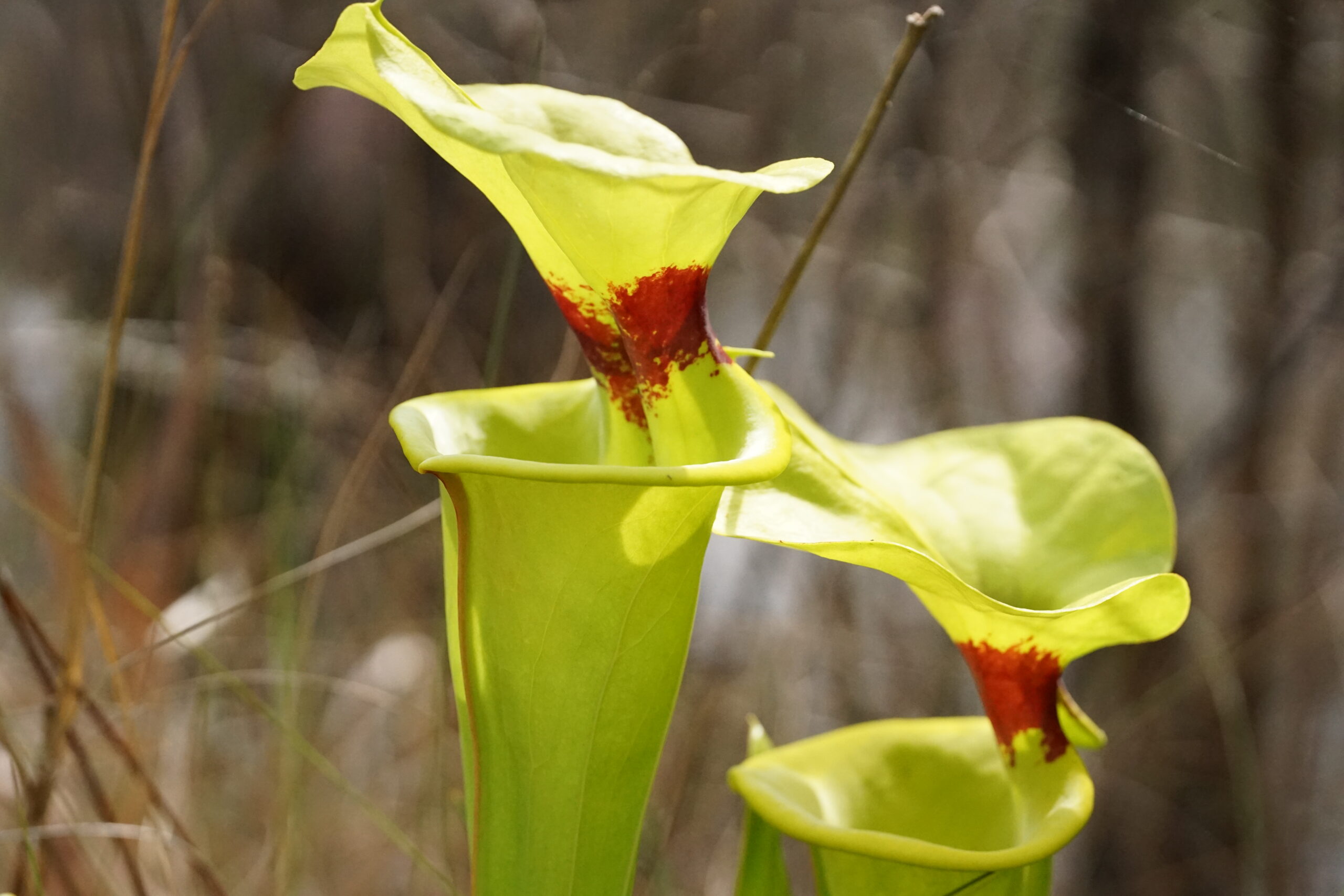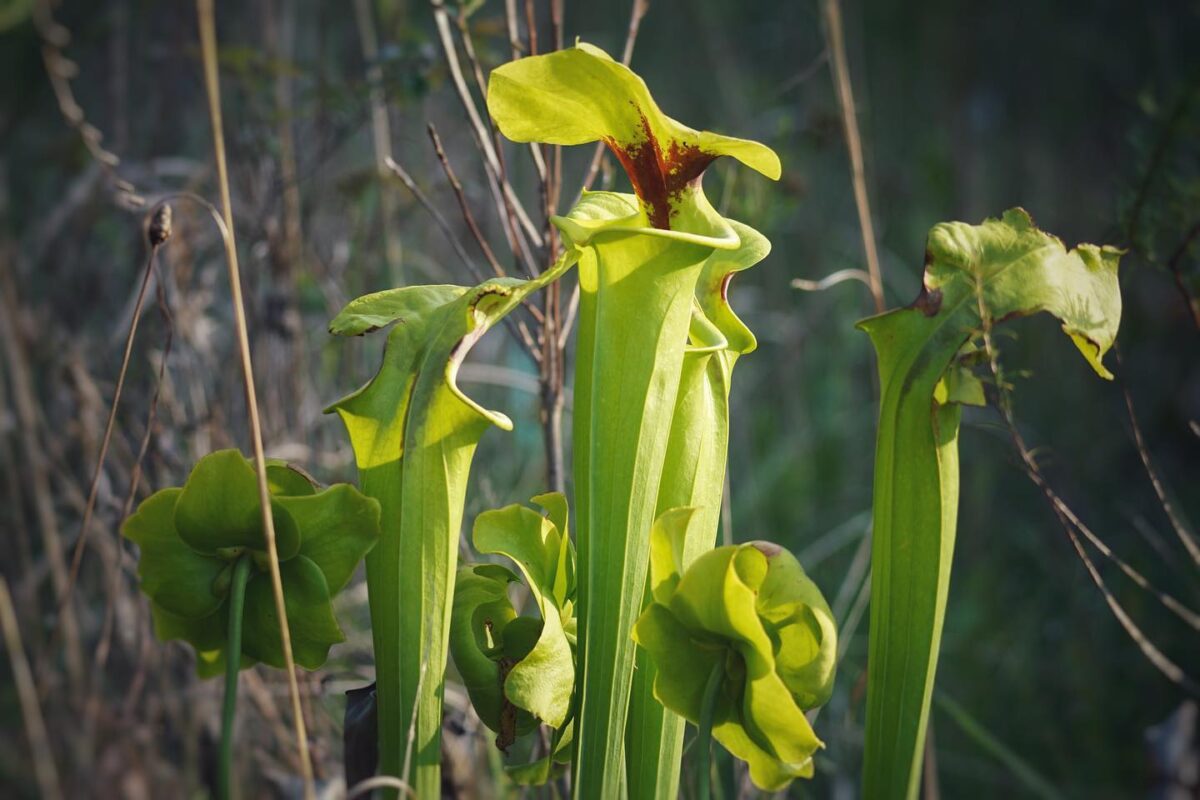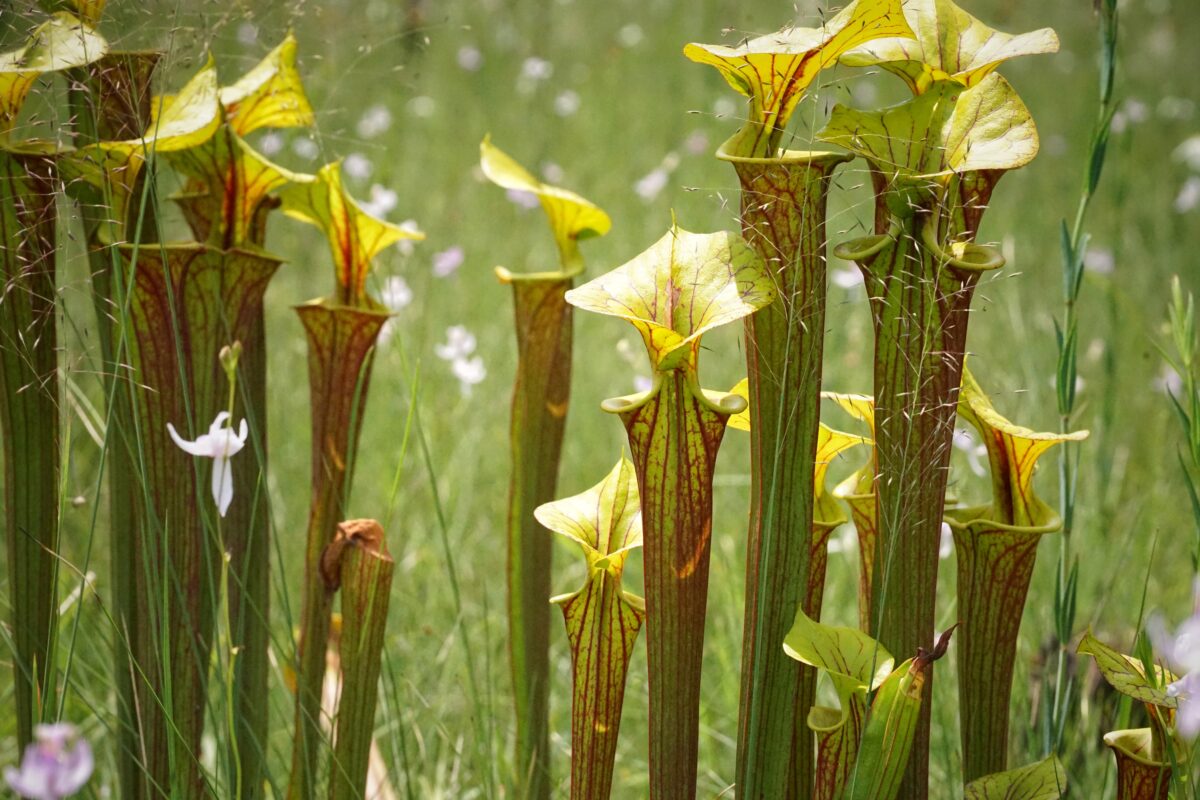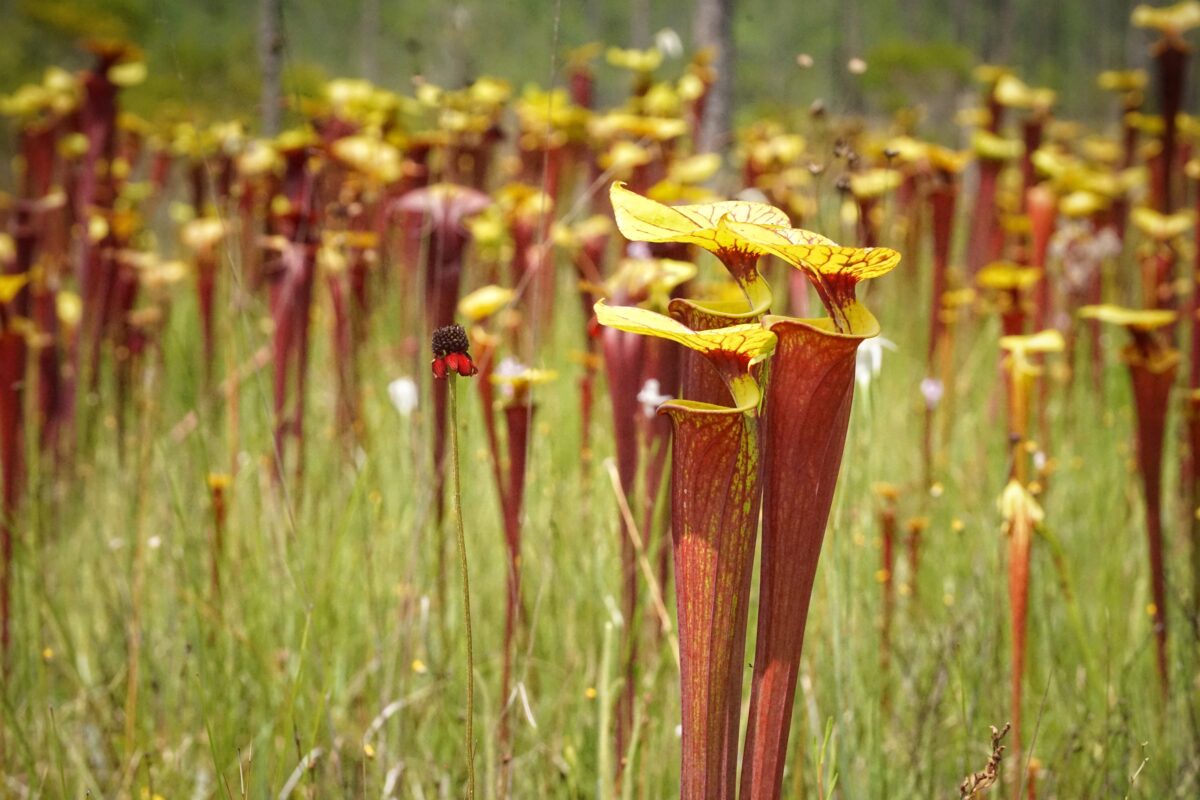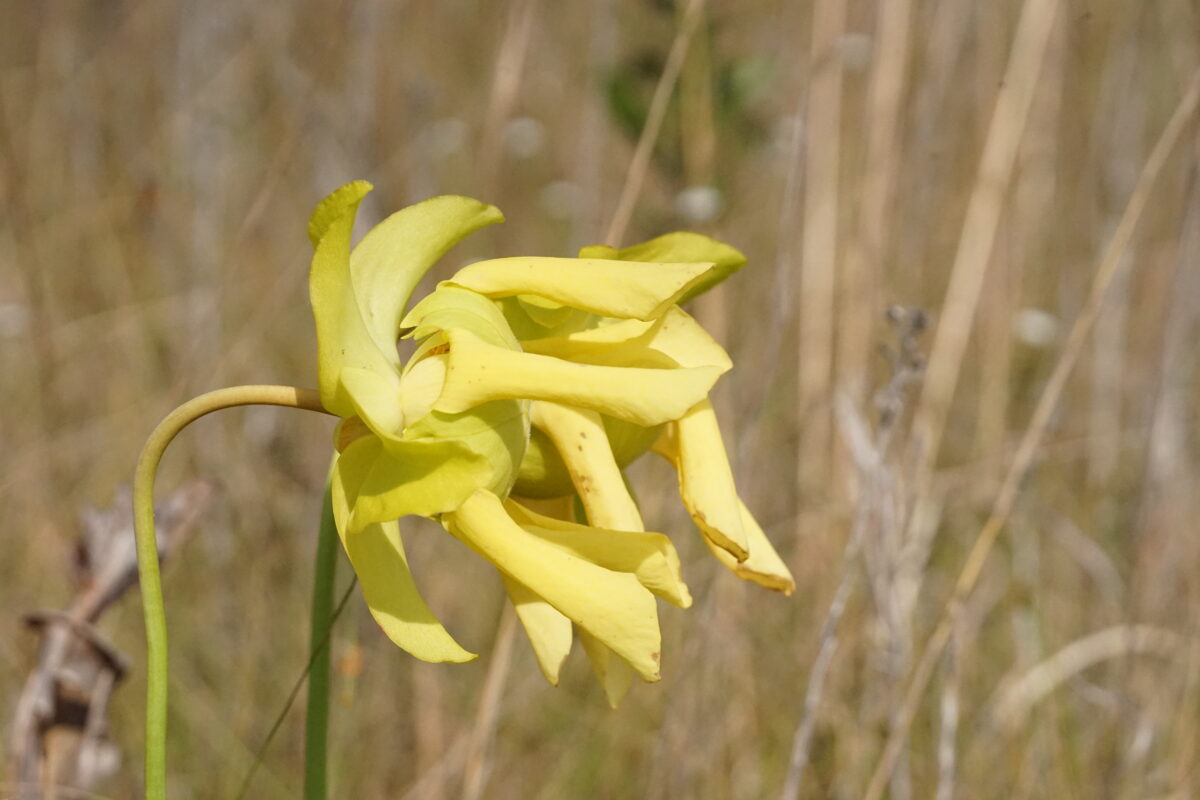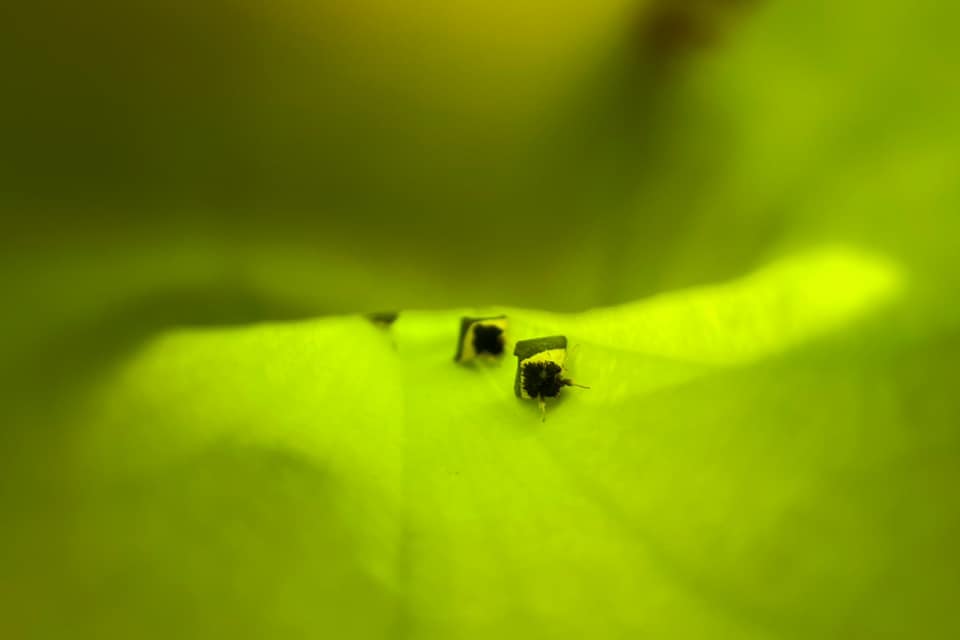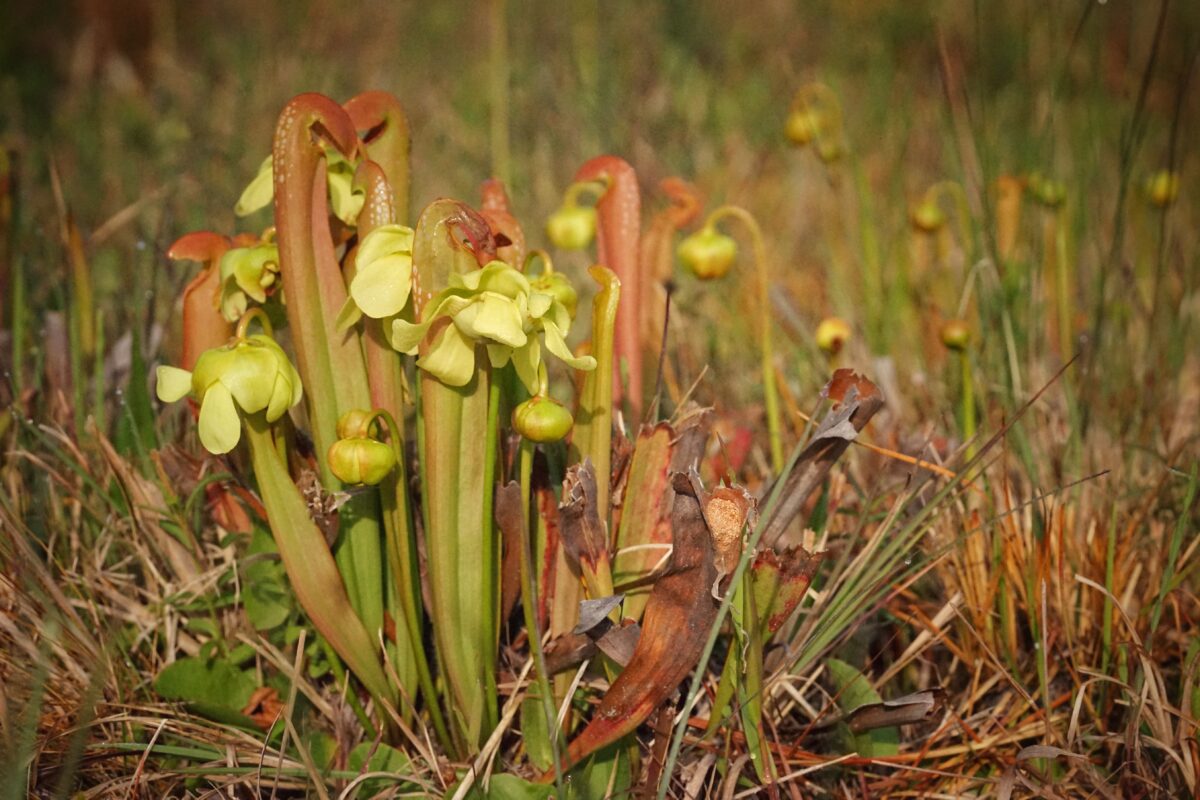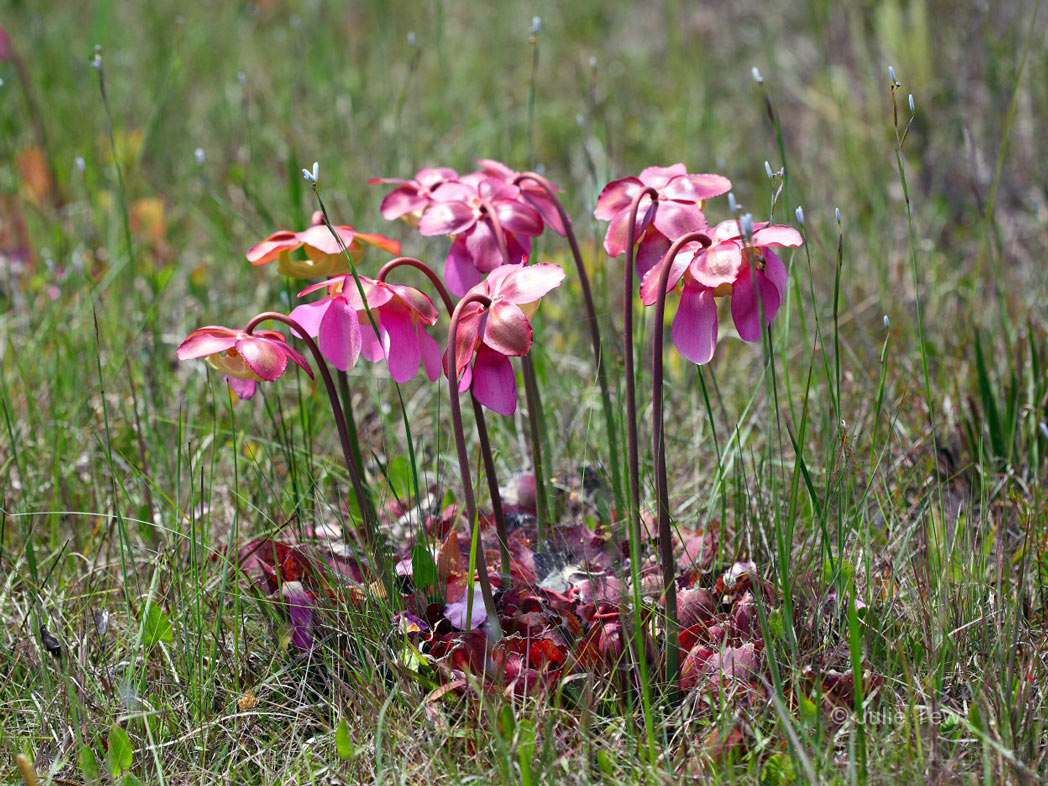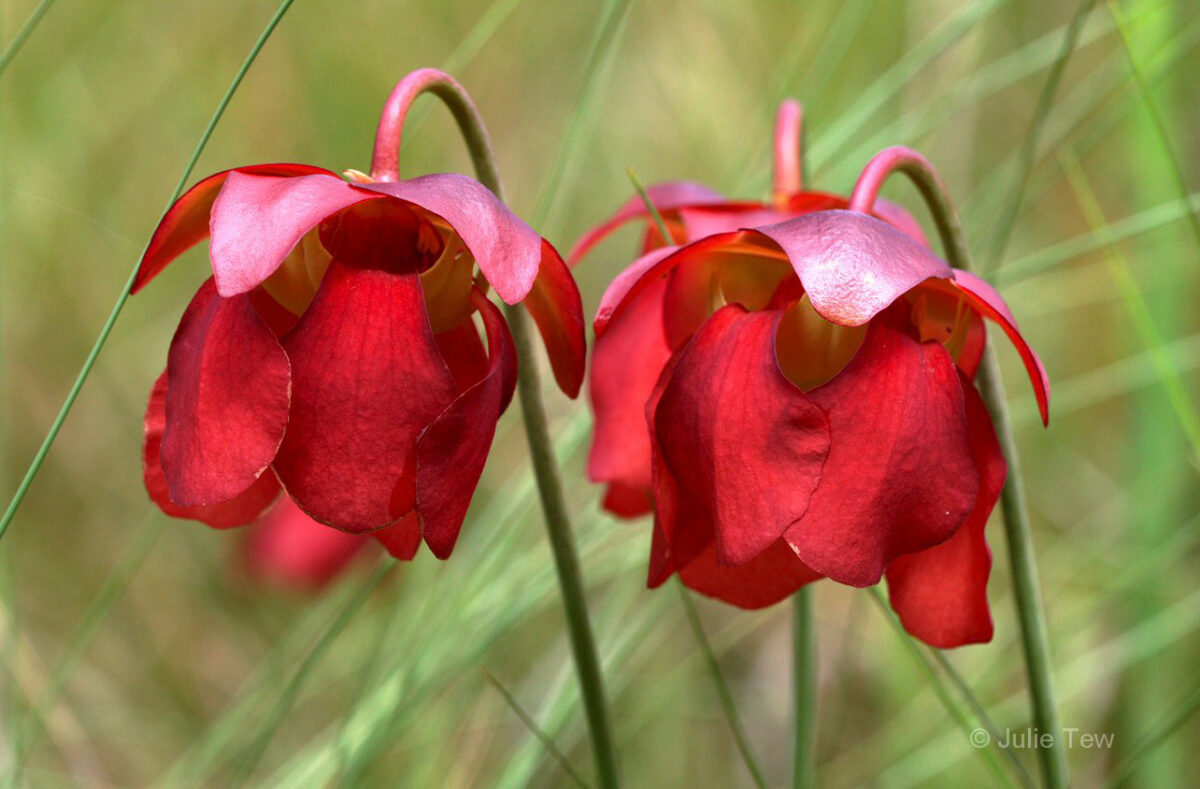Yellow pitcherplant
Pictured above: Yellow pitcherplant (Sarracenia flava) by Emily Bell. Click on terms for botanical definitions. View post as a PDF.
Florida’s bogs and wet flatwoods burst to life in springtime, full of beautiful and unique blooms. Few draw the attention and imagination as much as our carnivorous pitcherplants. The Yellow pitcherplant (Sarracenia flava) is one of our tallest and can be found in small to vast populations in the Panhandle.
Yellow pitcherplants produce large solitary bright yellow flowers that are 5-petaled and nodding. These blooms are held on long stalks above the pitchers to avoid the accidental consumption of their pollinators! Their tall erect pitchers are actually modified leaves with large broadly reniform hoods that arch over the pitcher’s opening. Because a wide range of pitcher coloration has been observed in the species — from almost solidly yellow to having dense deep red venation — up to seven different varieties have been named.
The prevailing theory for the carnivorous nature of these plants is that it evolved to compensate for the nutrient-poor environments in which they grow. Insects are lured into the pitcher’s column by nectar glands. The insect will then fall into the slippery tube, which contains downward facing hairs that prevent it from escaping. It then hits the bottom of the pitcher where a digestive fluid allows the plant to break down the insect and absorb its nutrients.
Interestingly, the Yellow pitcherplant is the larval host for the Epaulleted pitcherplant moth (Exyra ridingsii). Both the caterpillars and adult moths have evolved to live within the pitchers without becoming trapped and digested.
Family: Sarraceniaceae (Pitcherplant family)
Native range: Panhandle from Leon and Wakulla counties west
To see where natural populations of Yellow pitcherplant have been vouchered, visit florida.plantatlas.usf.edu.
Lifespan: Perennial
Soil: Inundated to consistently moist soils; can also grow in periodically flooded habitats
Exposure: Full sun
Growth habit: Up to 3 feet tall
Carnivorous plants have very specific habitat requirements and as such are not suited for use in urban native plant gardens. However, many Florida native carnivorous plants can be purchased from online retailers. Always be certain that retailers are certified by their state agriculture department, who inspect and ensure proper origin of plants.
Learn more about Yellow pitcherplants from the Florida Native Plant Society.
For information on other Sarracenia species, see these resources:

